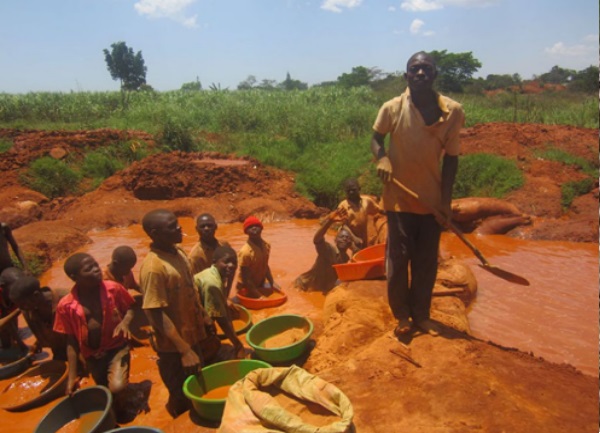Karamoja is one of the regions in Uganda where mining for gold is first becoming a major economic activity. The Ministry of Energy and Mineral Development data showed that the region boasts of over 50 different valuable minerals including gold, gemstones, limestone, and marbles among others. Despite this potential, the region remains one of the impoverished in Uganda. In 2016, a report from the Ministry indicated that there were 136 concessions held by foreign and local companies. These concessions cover up about 60% of Karamoja’s total land area. Like in other activity away from cattle rearing, women provide over 70% of the labor force in poorly managed mines, these women experience dozens of problems. “The way they do the mining, of course, it is open pit mining whereby you have to dig using rudimentary methods. And so when normally women get in there because of their physiological features, sometimes they get so weak to even carry the soils or the stones.” Said, Olive Emokol – Environmentalist.
Mining in Karamoja has been around for decades and this has left an impact on the natural resources like vegetation. Before any mining takes place, a number of thickets and trees are cleared to pave way for the activity. Women in this part of the country are fearful that in the near future they won’t have fuelwood to use in their homes since all trees are being cleared in the name of mining. “Much as they have done what we call Environment Impact Assessments prior to acquiring the mining licenses. But when you go where they are operating, you don’t see any signs of restorations going on.” Said, Charles Kabiswa – Program Manager, ECO. One of the biting issues among the women miners is limited water sources which they say is affecting their work. For any success in this business, water is very important as it is used in washing off the dust from both the body and the gold dust. It is, however, a scarce resource in this stone rid environment.
Karamoja’s ecosystem is threatened by the continued destruction of vegetation and creation of massive open pits. NBS visited one of the mining sites in Lalong Sub County in Moroto district where pits are left uncovered after complete extraction of the precious mineral. These mining sites did not have sanitary facilities exposing the environment and residents here to a number of diseases. “What is at stake if the mining sector is not well managed in terms of environmental issues. 64% of the land is under mining concessions that give us this bigger picture that if the mining sector is not well managed, most of the land will actually be degraded.”
Mining has a strong bearing on environmental conservation, natural resources, and critical ecosystems. The unregulated mining activities at Lalong have left vast areas degraded and unrestored contrary to regulations. Women have been forced to be part of this destruction. Some Civil Society Organizations are now working with these women to ensure that they work in secure environments. This is largely through imparting knowledge on safety matters. “And the challenge we have as ECO or as women miners is that there is even no first aid to help the women there. But as ECO we give them the practicals like if you are hurt by a stone, what is the first thing that you do.” Once in a while, some women also find time to refresh their mind through music, dance, and drama. Very few miners in Karamoja sub-region understand aspects of environmental conservation leaving government agencies with a task of sensitization of the masses.

